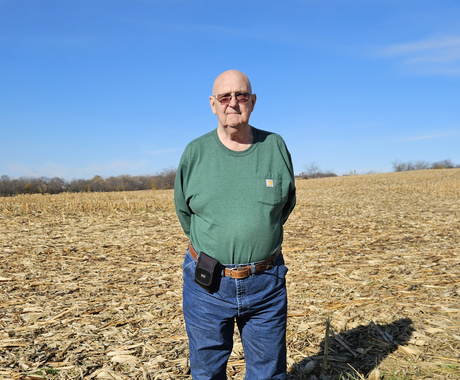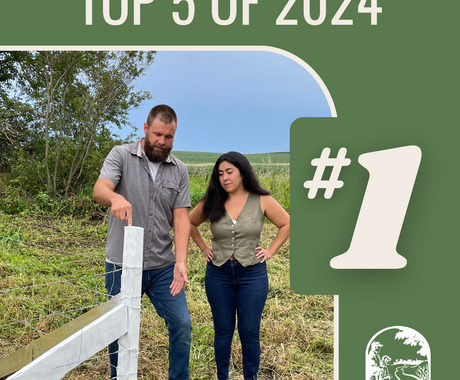By Kate Hansen, former staff member
For Margaret Hogan of Earlville, Iowa, prioritizing conservation means sharing it with the next generation. A farmer and landowner who implements conservation practices, Margaret is also a science teacher who gets her seventh-, eighth-, and ninth-grade students involved as much as she can.
After graduating from Iowa State University, Margaret moved back to the family farm and met her husband, John, shortly after. The two have been farming together for more than 40 years. Today, they grow corn, soybeans, and hay, and have about 30 cows on pasture.
Over that time, they have been involved with various conservation programs and efforts, many through the U.S. Department of Agriculture’s Natural Resources Conservation Service (NRCS).
Margaret traces her interest in conservation back to her father.
“Growing up, my dad was always conservation-minded; putting in (perennial vegetation) strips, setting aside acres even before they started paying farmers to do so,” she said. “I grew up with that kind of conservation mindset. Then my husband and I bought our present farm, and I decided we were going to call up NRCS.”
One of the programs that helped Margaret and John enhance their conversation practices was the Conservation Stewardship Program (CSP). Through CSP, they have implemented cover crops, no-till, pasture management with native prairie plants, invasive species management, buffer strips, and pollinator plots.
“We started with pretty sandy soil that was low in organic matter,” Margaret said. “To improve our yields, we started doing these conservation practices. To start the cover crop, we got some funding. Even though there have been years we haven’t gotten funding, we continue to do it on our own. In addition to building our organic matter, it also helps us to improve moisture retention.”
To involve her students, she hosts field days at the farm and plants multiple pollinator plots and a few hundred trees with them.
Margaret says the students especially enjoyed working on the pollinator plots, for which she gathered lots of support—from NRCS and organizations such as Pheasants Forever to a local concrete company willing to provide sand.
She enjoys the prospect that, “later in life, (her students will) be able to drive by these pollinator plots, look at them, and know they helped make them beautiful.”
Dave Mack, district conservationist for Delaware County NRCS, said he has enjoyed working with Margaret over the years.
“She’s always finding ways to get her students involved,” he said. “She also helps out at the county conservation board in the summers, and she does a lot of educational programs for kids.”
Dave fondly recalls a time she organized a tree-planting effort.
“The soil and water district in Delaware County has a tree sale every spring,” he said. “One year, we had more than a few trees left over, and wanted to get them in the ground somehow. Margaret stepped up... and got them all put to good use and planted with her students. It was really neat.”
Margaret has many reasons to involve her students.
“A lot of kids have not even been out to a farm before, and we live in a rural area,” she said. “My first goal was to get them out on the farm. The second was to get them involved in hands-on projects. They learn ways to help the environment. A lot of these practices will help with drinking water quality, soil quality; it’s all important.”
Feature photo: Margaret Hogan conducts bluebird data collection during a field day in Iowa. The science teacher gets her students involved in hands-on projects so they can learn ways to help the environment. | Photo submitted





